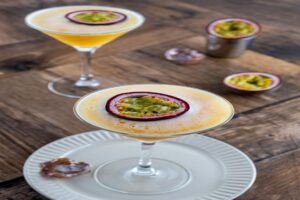Exploring the Flavorful World of Caribbean Spirits
Imagine yourself on a sun-drenched Caribbean beach, a glass of rum in hand, its golden hues reflecting the warmth of the tropical sun. Rum, a quintessential spirit of the Caribbean and cherished worldwide, embodies centuries of cultural heritage and craftsmanship. In this guide, we delve deep into the essence of rum—its origins, production methods, and diverse varieties—to uncover why it continues to captivate enthusiasts globally.
What is Rum?
Rum stands as a distilled alcoholic beverage derived from sugarcane byproducts, such as molasses or sugarcane juice. Originating in the Caribbean and Latin America, rum boasts remarkable versatility, offering a spectrum of flavors ranging from crisp and light to robust and dark, making it suitable for both savoring and mixing in cocktails.
The Art of Crafting Rum
- Fermentation: The journey begins with sugarcane byproducts fermented with water and yeast, transforming sugars into alcohol. This “wash” forms the foundation of rum production, laying the groundwork for its distinct flavor profiles.
- Distillation: Following fermentation, the wash undergoes distillation to separate alcohol from water and impurities. The choice of distillation method—pot stills for depth or column stills for clarity—impacts the final character of the rum.
- Aging: Many rums undergo aging in oak barrels, where they acquire complexity, richness, and color. Aging periods vary widely among rum types, influencing their flavor profiles and smoothness.
- Blending: Post-aging, rums may be skillfully blended to achieve consistency and balance in flavor. Master blenders meticulously combine rums of varying ages and characteristics to create nuanced and harmonious blends.
Types of Rum
Rum is categorized into distinct types based on aging and flavor profiles, catering to a diverse palate:
- White or Silver Rum: Clear and light-bodied, often minimally aged. It boasts a crisp, clean taste ideal for cocktails.
- Gold or Amber Rum: Aged in oak barrels, imparting a deeper color and complex flavors compared to white rum.
- Dark Rum: Aged longer in charred barrels, resulting in a robust, caramelized flavor profile suited for sipping or bold cocktails.
- Spiced Rum: Infused with spices like cinnamon or vanilla during or after aging, adding warmth and depth to the spirit.
- Flavored Rum: Enhanced with natural flavors such as coconut or pineapple, offering a tropical twist to cocktails and mixed drinks.
Enjoying Rum
Rum offers myriad ways to be enjoyed, reflecting its versatility and cultural significance:
- Neat: Savoring rum neat allows for a full appreciation of its diverse flavors and aromatic complexities, particularly with aged and premium varieties.
- On the Rocks: Chilled over ice, rum’s flavors are subtly enhanced, providing a refreshing and nuanced drinking experience.
- In Cocktails: Rum is a staple in classic cocktails like the Mojito, Piña Colada, and Daiquiri, showcasing its versatility and ability to blend harmoniously with other ingredients.
- In Cuisine: Beyond drinks, rum enhances culinary creations with its distinctive flavor, enriching sauces, marinades, and desserts like rum-infused cakes.
Conclusion
Rum transcends being merely a drink; it embodies the spirit of the Caribbean and its vibrant cultural tapestry. Whether enjoyed straight, mixed into cocktails, or incorporated into culinary delights, rum offers an immersive journey through flavors and traditions. Embrace the craftsmanship and legacy behind this beloved spirit, and relish the exploration of its diverse tastes. Here’s to the joy of discovering rum’s enduring allure and its esteemed place in the world of spirits. Cheers!




